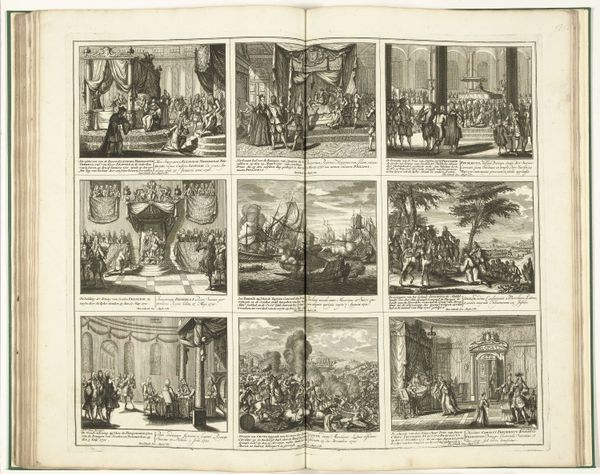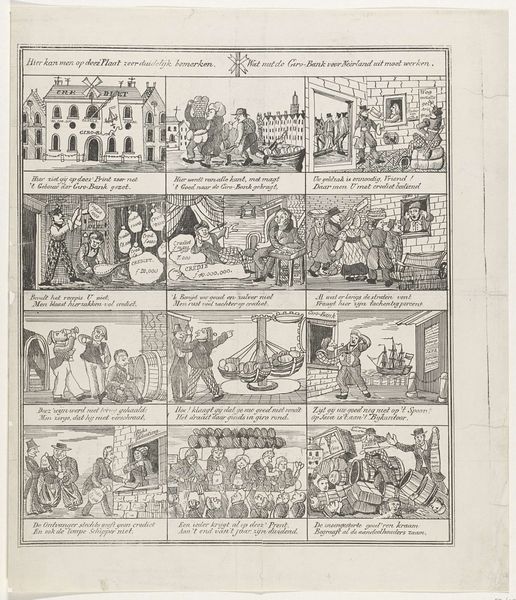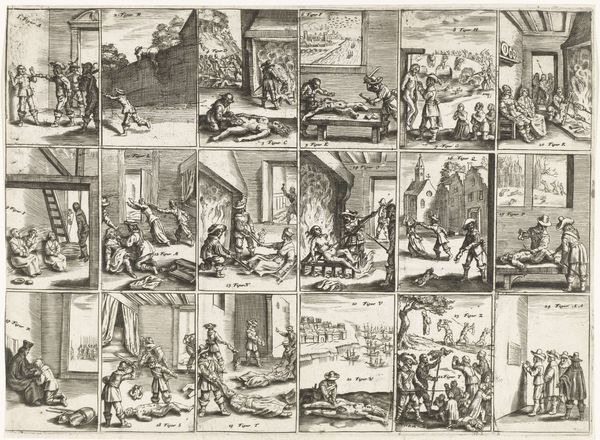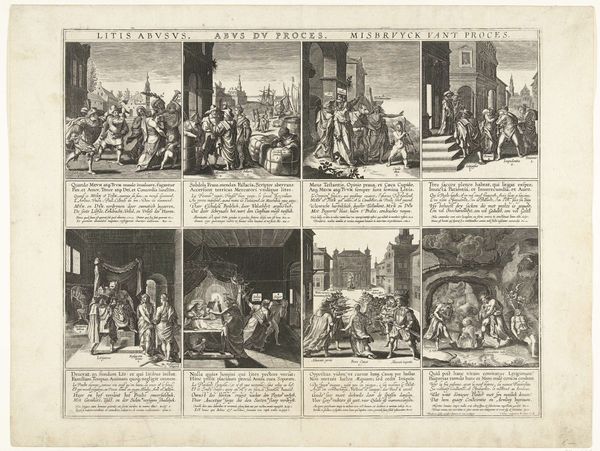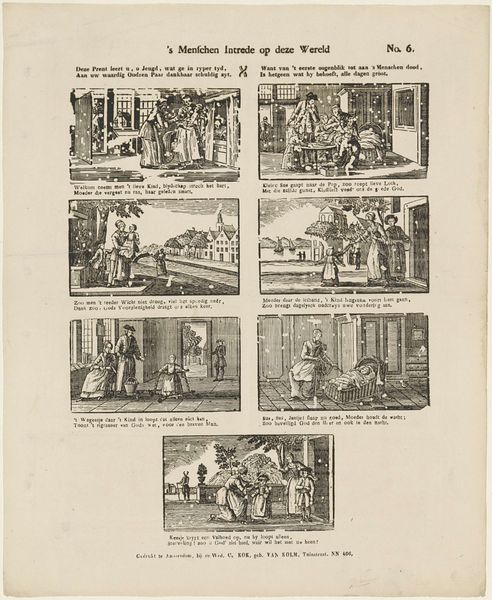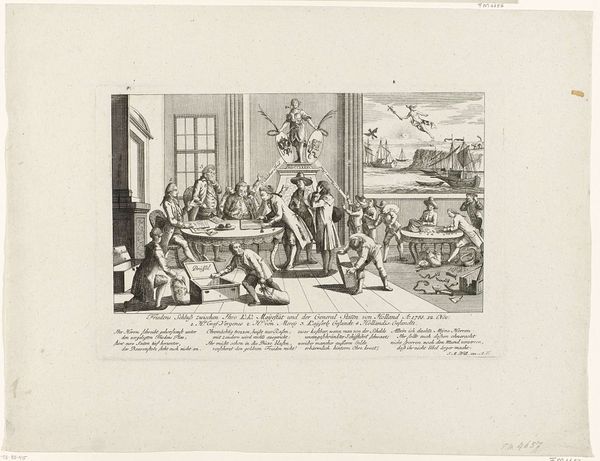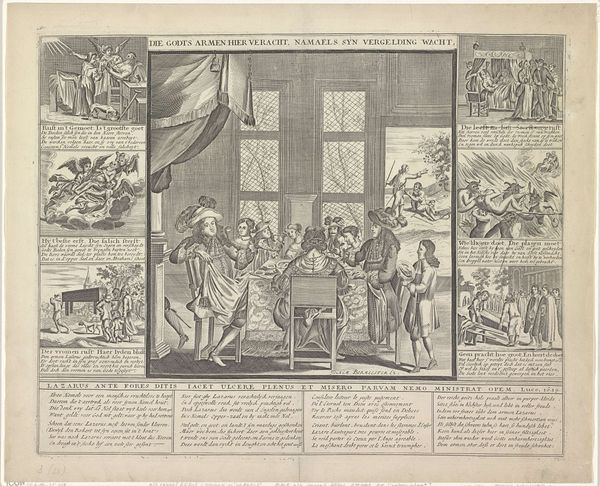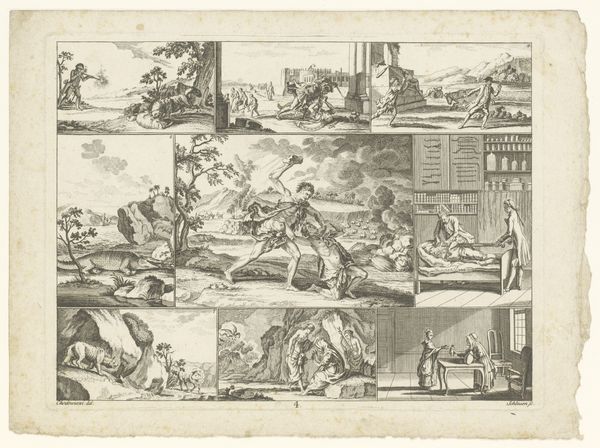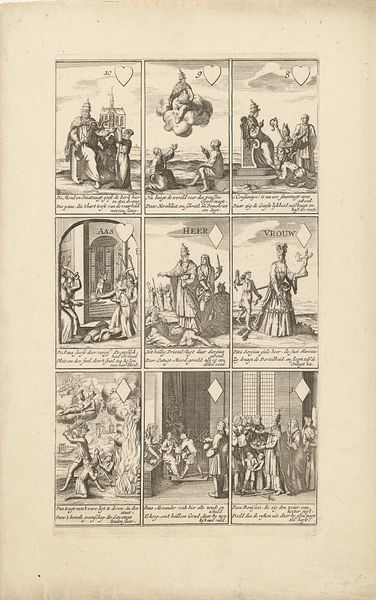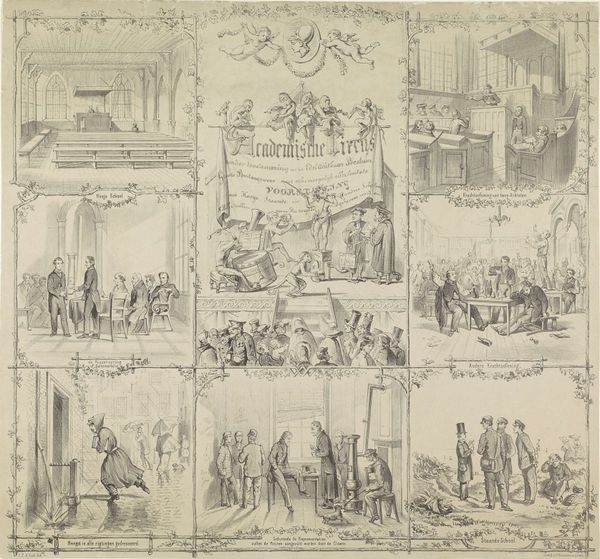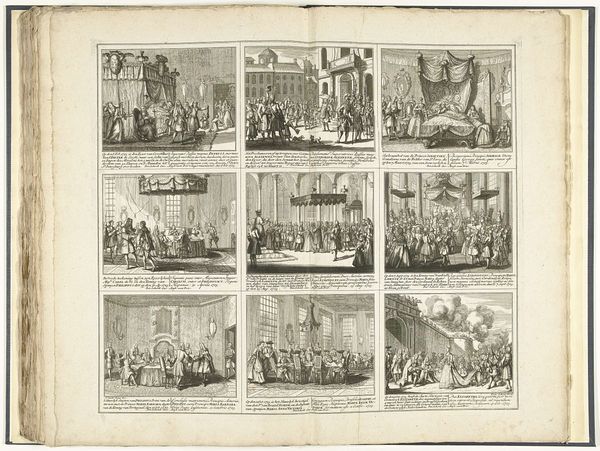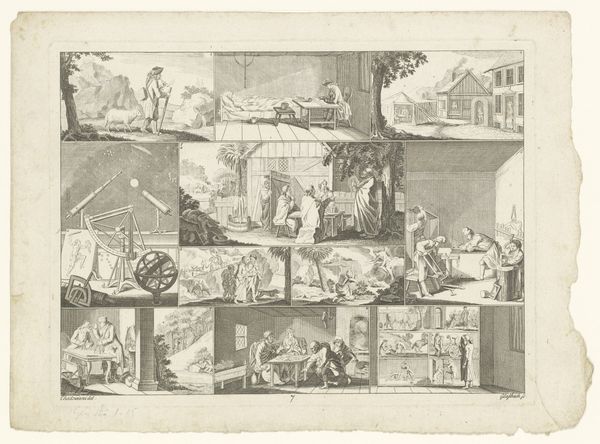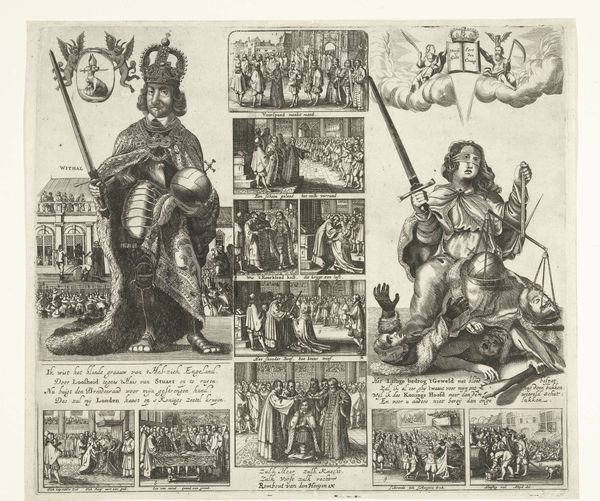
Allegorie op de voordelen voor de Turken door de verdeeldheid onder de Christelijke naties, ca. 1664 1664
0:00
0:00
print, engraving
#
allegory
#
narrative-art
#
baroque
# print
#
history-painting
#
engraving
Dimensions: height 405 mm, width 520 mm
Copyright: Rijks Museum: Open Domain
Curator: The artwork we're looking at is an engraving from around 1664, entitled "Allegory of the advantages for the Turks from divisions among the Christian nations." The piece is by an anonymous artist, reflecting on a complicated moment in European history. Editor: Well, my first impression is that this is rather bleak. There is an ordered division within each section—twelve scenes arranged like windows in a pane. The light and shade highlight a world of paranoia, fragmentation, and underlying hostility. Curator: The artist employs an allegorical mode, representing abstract concepts through scenes of everyday life, largely involving dogs. For example, we see scenes representing care ("Zorg"), greed ("Raad"), loyalty ("Trouw"), and strife, all impacting the broader dynamic between Christian nations and the Ottoman Empire. It seems to warn about how division provides an advantage to external forces. Editor: I see that contrast echoed visually, most striking is the division of space—the picture plane cleaved into rectangular modules. This enforces the allegorical point. But more interesting for me is the density and complexity, creating areas of visual stress against moments of clarity. Curator: Exactly! Note how the artist uses animals to communicate meaning. The behavior of these animals clearly reflects negatively on the actions of people, perhaps highlighting a base impulse at play or mirroring social dysfunction. The choice to include text provides another way of explaining or illustrating the meaning behind those visual allegories. Editor: Those miniature scenes! How meticulously rendered. But the overall effect, that interplay of miniature theatre and didactic text, feels overwrought and slightly pedantic. One senses a desperation to control and define meaning in a world seen to be coming apart. Curator: And a deep pessimism in those claims... Though in historical context, tensions within Christian Europe were constantly manipulated by outside powers such as the Ottomans. Perhaps this visual warning sought to foster unity against the ever-present threat. Editor: Ultimately, it speaks of fear, doesn't it? Fear rendered with great technical precision and a rather heavy hand. A fascinating, if slightly suffocating, demonstration of anxiety in pictorial form.
Comments
No comments
Be the first to comment and join the conversation on the ultimate creative platform.
